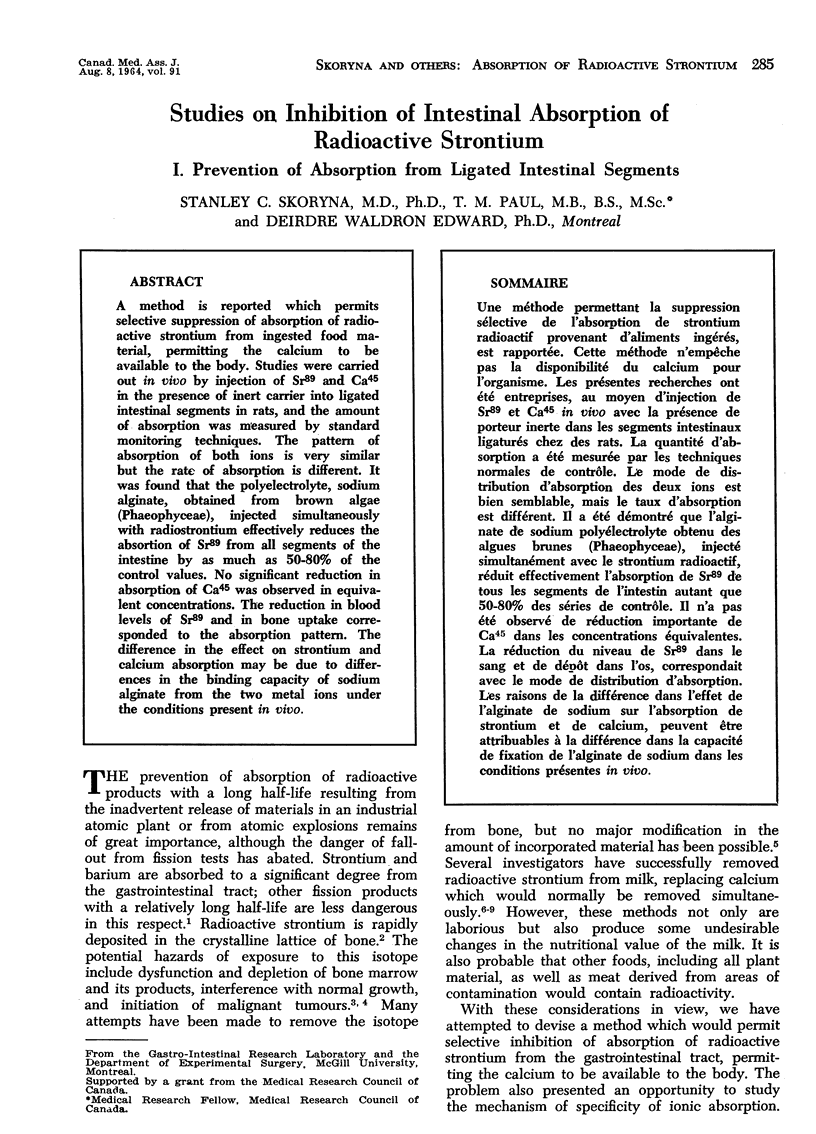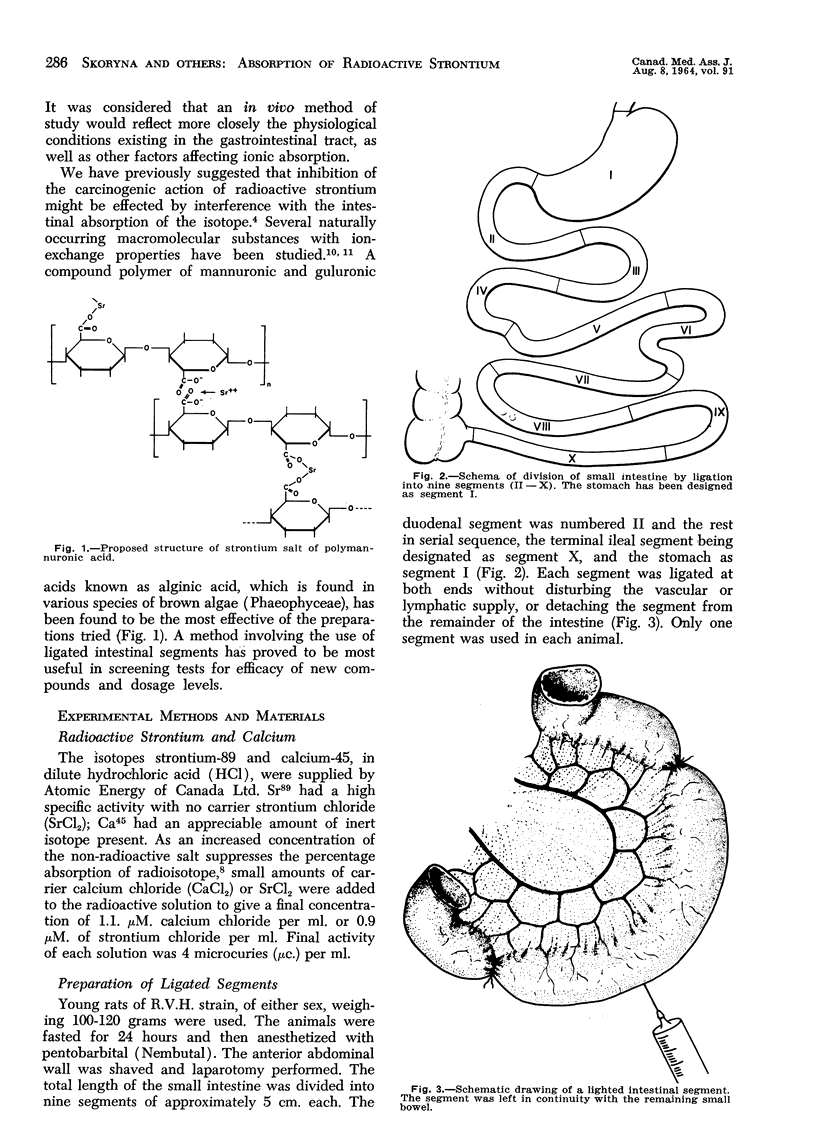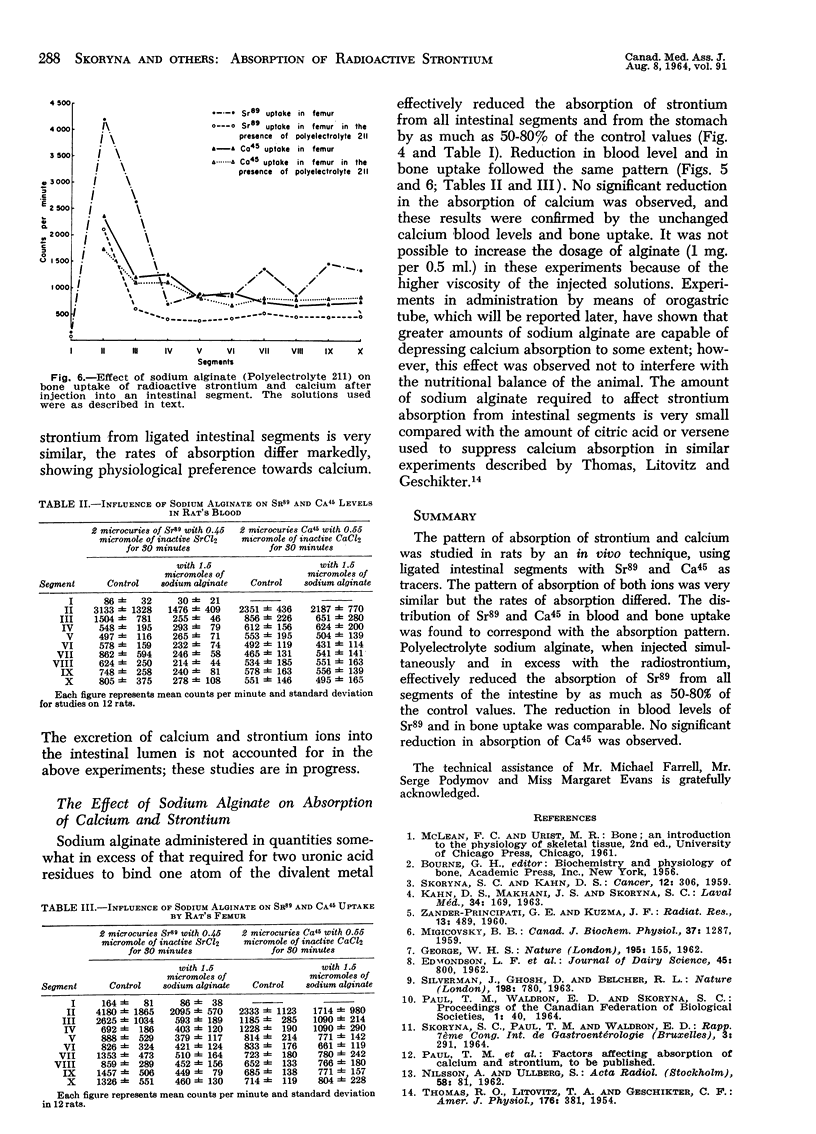Abstract
A method is reported which permits selective suppression of absorption of radioactive strontium from ingested food material, permitting the calcium to be available to the body. Studies were carried out in vivo by injection of Sr89 and Ca45 in the presence of inert carrier into ligated intestinal segments in rats, and the amount of absorption was measured by standard monitoring techniques. The pattern of absorption of both ions is very similar but the rate of absorption is different. It was found that the polyelectrolyte, sodium alginate, obtained from brown algae (Phaeophyceae), injected simultaneously with radiostrontium effectively reduces the absortion of Sr89 from all segments of the intestine by as much as 50-80% of the control values. No significant reduction in absorption of Ca45 was observed in equivalent concentrations. The reduction in blood levels of Sr89 and in bone uptake corresponded to the absorption pattern. The difference in the effect on strontium and calcium absorption may be due to differences in the binding capacity of sodium alginate from the two metal ions under the conditions present in vivo.
Full text
PDF



Selected References
These references are in PubMed. This may not be the complete list of references from this article.
- GEORGE W. H. Separation of strontium from milk and protein solutions by gel filtration. Nature. 1962 Jul 14;195:155–157. doi: 10.1038/195155a0. [DOI] [PubMed] [Google Scholar]
- SILVERMAN J., GHOSH D., BELCHER R. L. Removal of strontium-90 from milk. Nature. 1963 May 25;198:780–780. doi: 10.1038/198780a0. [DOI] [PubMed] [Google Scholar]
- SKORYNA S. C., KAHN D. S. The late effects of radioactive strontium on bone; histogenesis of bone tumors produced in rats by high Sr89 dosage. Cancer. 1959 Mar-Apr;12(2):306–322. doi: 10.1002/1097-0142(195903/04)12:2<306::aid-cncr2820120215>3.0.co;2-6. [DOI] [PubMed] [Google Scholar]
- ZANDER-PRINCIPATI G. E., KUZMA J. F. The effect of zirconium citrate on the latent period of Sr89-induced bone cancer in mice. Radiat Res. 1960 Sep;13:489–495. [PubMed] [Google Scholar]


